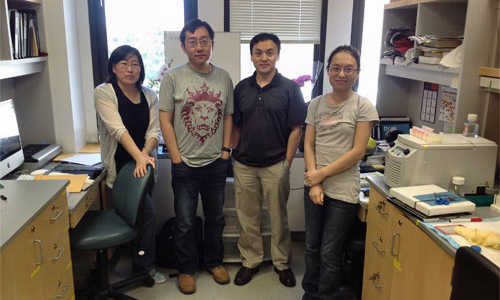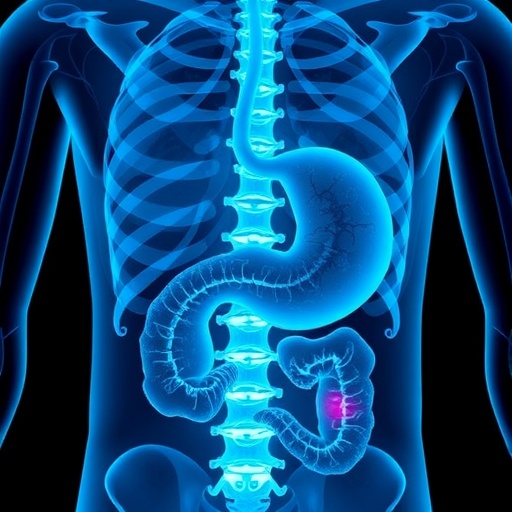Case Western Reserve researchers have identified a two-pronged therapeutic approach that shows great potential for weakening and then defeating cancer cells. The team’s complex mix of genetic and biochemical experiments unearthed a way to increase the presence of a tumor-suppressing protein which, in turn, gives it the strength to direct cancer cells toward a path that leads to their destruction.
Photo Credit: Zhang Lab
If the laboratory findings are supported by tests in animal models, the breakthrough could hold the promise of increasing the effectiveness of radiation and chemotherapy in shrinking or even eliminating tumors. The key is to build up a “good” protein – p53-binding protein 1 (53BP1)—so that it weakens the cancer cells, leaving them more susceptible to existing cancer-fighting measures.
The breakthrough detailed appeared in the Nov. 24 online edition of the journal PNAS (Proceedings of the National Academy of Sciences).
“Our discovery one day could lead to a gene therapy where extra amounts of 53BP1 will be generated to make cancer cells more vulnerable to cancer treatment,” said senior author Youwei Zhang, PhD, assistant professor of pharmacology, Case Western Reserve University School of Medicine, and member of the Case Comprehensive Cancer Center. “Alternatively, we could design molecules to increase levels of 53BP1 in cancers with the same cancer-killing end result.”
The cornerstone of the research involves DNA repair – more specifically, double-stand DNA repair. DNA damage is the consequence of an irregular change in the chemical structure of DNA, which in turn damages and even kills cells. The most lethal irregularity to DNA is the DNA double-strand break in the chromosome. DNA double-strand breaks are caused by everything from reactive oxygen components occurring with everyday bodily metabolism to more damaging assaults such as radiation or chemical agents.
The body operates two repair shops, or pathways, to fix these double strand breaks. One provides rapid, but incomplete repair – namely, gluing the DNA strand ends back together. The problem with the glue method is that it leaves the DNA strands unable to transmit enough information for the cell to function properly – leading to a high cell fatality rate.
The second shop, or pathway, uses information from intact, undamaged DNA to instruct damaged cells on how to mend broken double strands. During his study, Zhang and fellow investigators discovered a previously unidentified function of a known gene, UbcH7, in regulating DNA double-strand break repair. Specifically, they found that depleting UbcH7 led to a dramatic increase in the level of the 53BP1 protein.
“What we propose is increasing the level of 53BP1 to force cancer cells into the error-prone pathway where they will die,” Zhang said. “The idea is to suppress deliberately the second accurate repair pathway where cancer cells would prefer to go. It is a strategy that would lead to enhanced effectiveness of cancer therapy drugs.”
The next research step for Zhang and his team will be to test their theory in animal models with cancer. Investigators would study the effects of introducing the protein 53BP1 in lab mice with cancer and then applying chemotherapy and radiotherapy as treatment.
“Each cell in our bodies already contains these UbcH7 proteins that regulate 53BP1,” Zhang said. “In patients with cancer, we want to induce more of 53BP1 proteins within their bodies to make their cancer cells vulnerable to radiation therapy and chemotherapy drugs.”
Story Source:
The above story is based on materials provided by Case Western Reserve University





